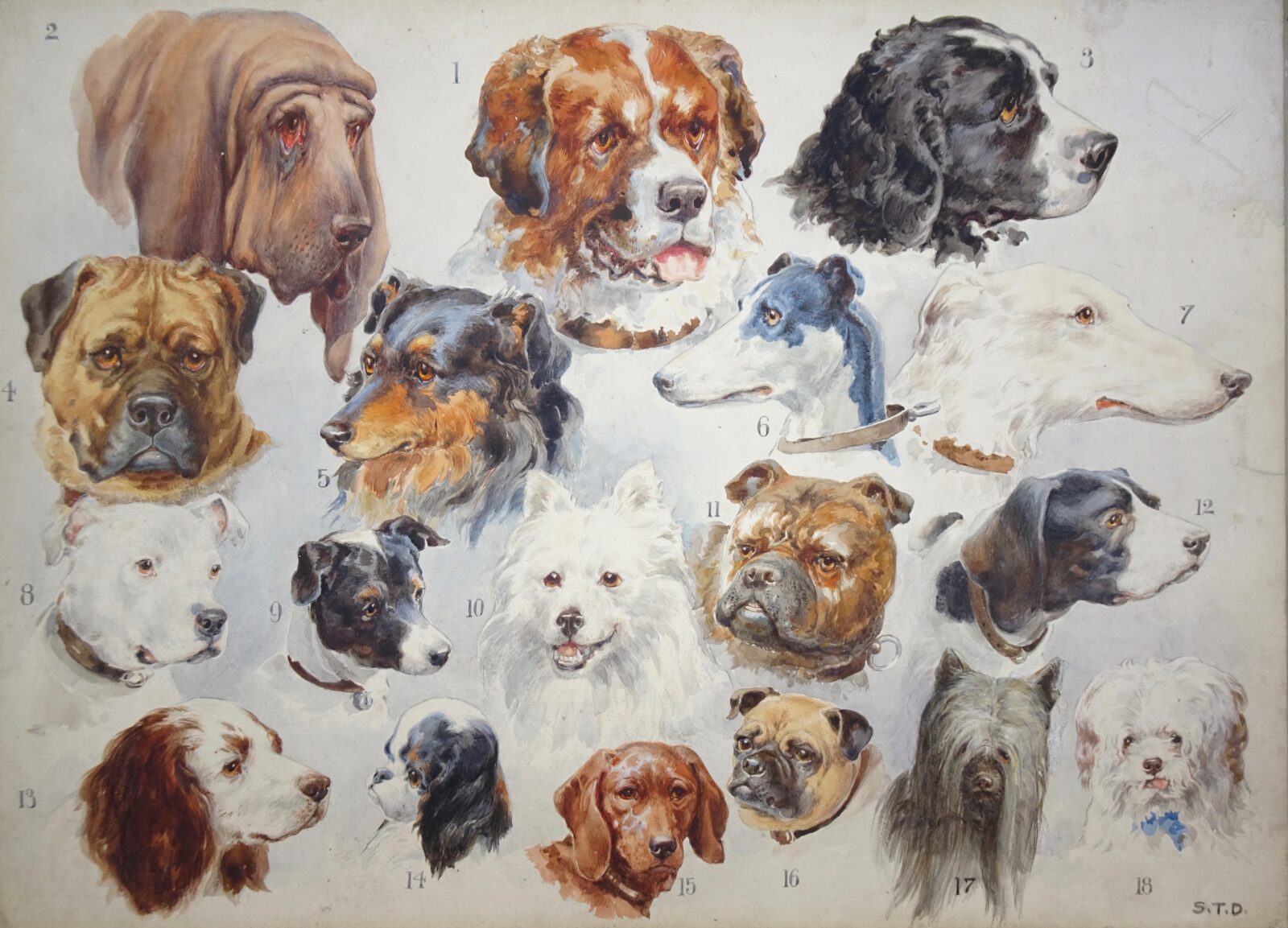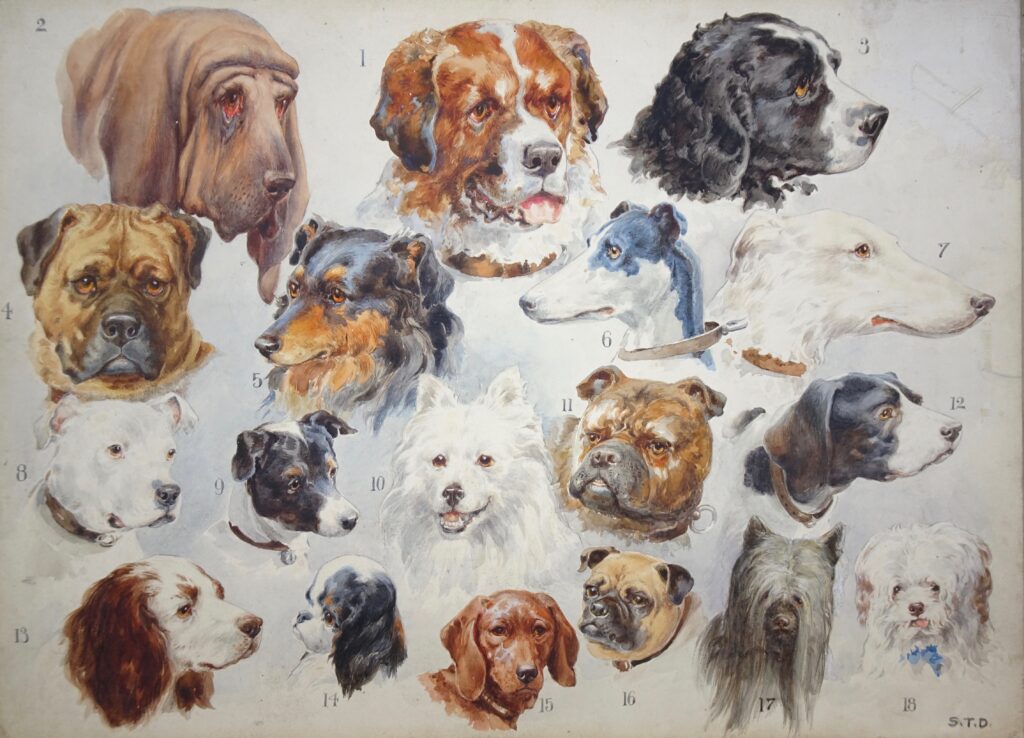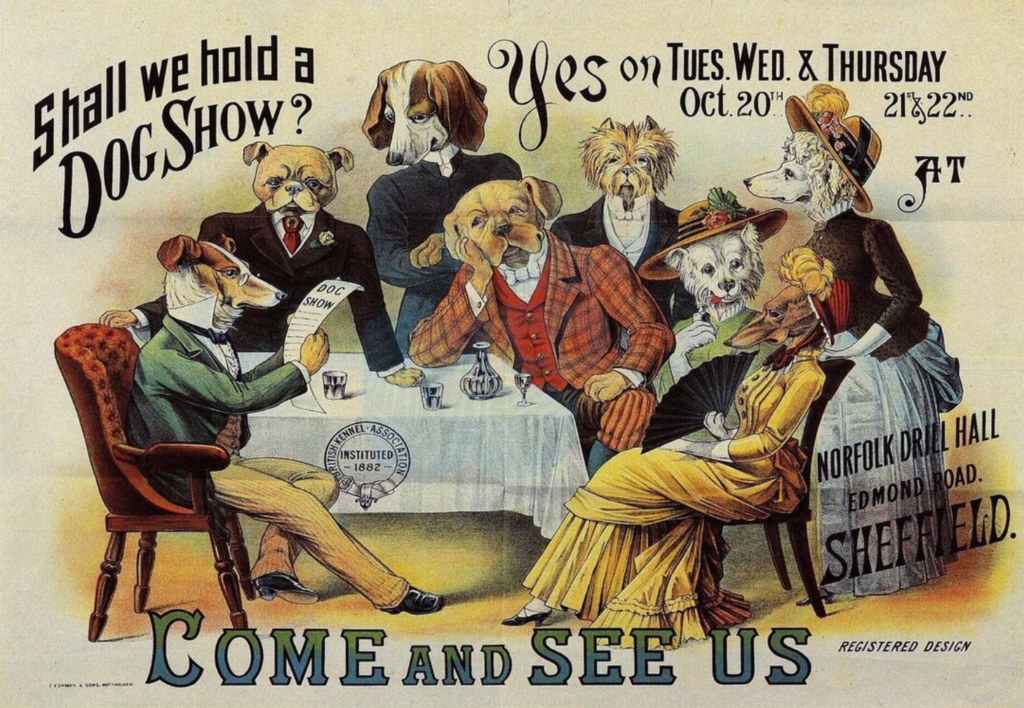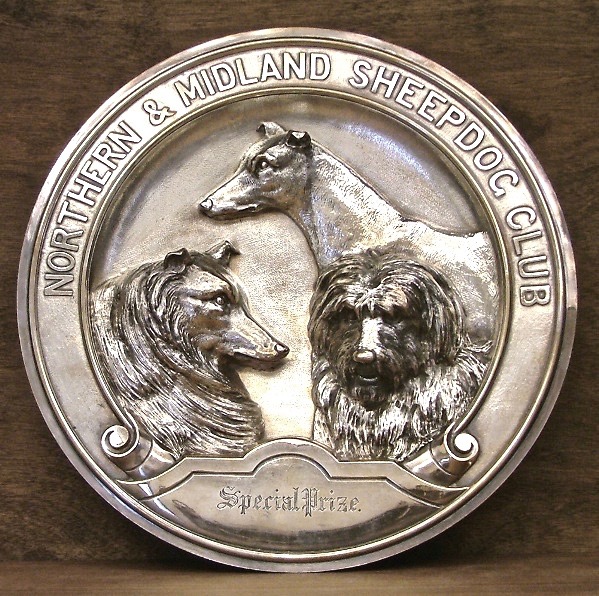Then & There: Shall We Hold a Dog Show? (The Proliferation of a Phenomenon)

Story and photos by Richard Hooper
In 1859, Newcastle, England, was the site of the first recognized dog show. With 60 entries, and limited to pointers and setters, it was a small affair.
That same year, Birmingham also held a show for sporting dogs only, with the list expanded to include Clumber, cocker and other spaniels. The following year, 1860, Birmingham was the venue for the first dog show billed as for “sporting and other dogs.” It had 267 entries, and members of the aristocracy began showing up among the names of the prize winners.
There were several large shows in 1861 for sporting and other dogs, which was becoming the norm, and the number of cities holding them increasing to include Leeds and Manchester. London held its first show in 1862. The painter, Sir Edwin Landseer, was one of the judges. He lobbied vigorously to ban dogs with cropped ears or other mutilations from being exhibited at future shows. Even though the Duke of Beaufort was the president of the show, there was additional controversy, scandalous in its nature.

(Above: Poster for a dog show at Sheffield, England, from the early 1880s.)
The show’s founder and manager, T. Dawkins Appleby, owed, and was unable to pay, ₤485 to tradesmen who had worked on the show. In addition, the silver-smiths, Elkington and Co., had taken back the trophies that had been on exhibit at the show. Appleby tried to explain that the company had taken them back for engraving, however, it appears that Elkington maintained a tight grip on them. Undeterred, there were two shows in London the following year.
The first of these had 1214 entries and, at times, was an unruly affair. It is estimated that there were over 2,000 entries at the second London show that year, with things reportedly going much smoother. As more dogs were entered, there were more frequent classes for breed names that we recognize today.

There were catchall classes as well. It was not unusual for shows to have something along the lines of “An Extra Class for any known Breed of Foreign Sporting Dogs” and a similar class for non-sporting. These were further divided into large and small dogs. More often than not, the prize
lists would have the name of the dog and the owner, but not mention the breed. The first exhibition of the National Dog Club held in Islington in 1869 had a class for “Poodle, Chinese, Japanese, and Foreign Toy Dogs.”
Occasionally, the breed of the winners in these unusual classes would be named. At a Manchester show in 1865, the class for “Other Breeds of Dogs,” a Havannah poodle took a third prize. No doubt that this was related to the Havanese, a breed which has also been known by several names, including the Havana silk dog. The dog’s name was Tiny, owned by Mr. Long, and the previous year Tiny had won a first prize – this time as a Spanish poodle.
Even though the number of entries did not increase with consistency, locations began to multiply. London began having more shows and in 1870, indicative of the status that dog shows had achieved, the immense, high-end venue of the Crystal Palace initiated its run of the Grand Exhibition of Sporting and Other Dogs. The plate glass and cast iron structure had originally been constructed in Hyde Park to house the Great Exhibition of 1851.
In 1854, it was relocated to an area in South London. First and second prizes at the first Crystal Palace show were awarded in a class for “Yard or Keeper’s Night Dogs,” and Miss Hale’s dog, Lion (breed not specified) was awarded “The Lady’s Prize for the Best Dog in the Show.”

(Above: A silverplate trophy by Elkington and Co. About 10 inches in diameter. Courtesy of a private collector.)
Shows continued to open in major cities. The first Scottish National Exhibition opened in Glasgow in 1871, the same year Edinburgh held the first Scottish Metropolitan Exhibition. In Ireland, Dublin hosted the Grand National Dog Show in 1872. During these early years, shows were also being held in smaller, regional locations. These could be stand-alone shows or combined with other events. Indeed, even before the Newcastle show in 1859, there were dog exhibits in conjunction with agricultural shows.
But a dog show in conjunction with another show, such as the Botanical and Horticultural Society Show at Exeter in 1863, would have been unheard of a few years before. This is a phenomenon whose time had come. It was the beginning of even more shows at more locations, spreading outward onto the continent of Europe and across the Atlantic to the United States. It was the puppy that would grow into Crufts and Westminster. But these are other stories. ML
This article first appeared in the November 2019 issue of Middleburg Life.


